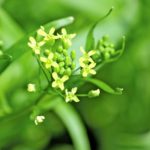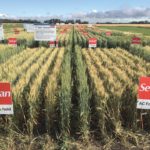
Governing the farm
On most farms, ‘governance’ sounds like the last thing you’d want to talk about if you hope to keep everyone happy. Steve Tomtene used to think so too, but is glad he changed his mind

Real sustainability
Integrating the benefits of his Ontario Soil Network membership into how he farms is helping Rick Kootstra find real sustainability

Sunflowers need a hybrid lift
With Western sunflower acres dropping sharply in recent years, new varieties are needed to claw acres back from easier-to-grow soybeans

Improving flax one allele at a time
Rust hasn’t affected Canadian flax for more than 40 years, but new varieties must still incorporate resistance

Flax opportunities
Agronomics and yield are the big priorities for flax growers in Western Canada

Plant Breeders Rights not so simple
New regulations give PBR regs more teeth, but breeders still want you to follow the law out of self-interest, not fear

Detecting spoilage before it starts
An adaptation of cancer-screening technology offers a better and safer way to check for grain bin moisture, with a bonus of theft detection

Could camelina be ‘the next canola?’
You’ve heard the pitch on this oilseed before, but this time it could actually be true

SeCan at 40
Born in 1976, is SeCan living up to its promise to deliver better, more cost-effective genetics by supporting public research?

Moisture in or moisture out?
Are you really drying that grain when you turn on the fans?


